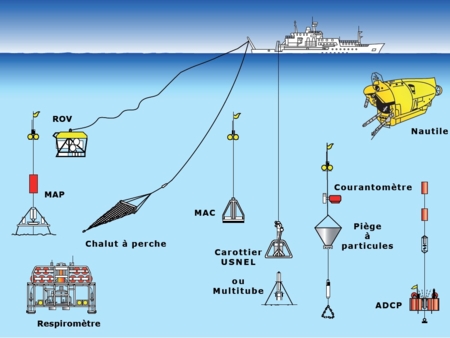Investigating the temporal and environmental dynamics controlling deep-sea megafauna in Barkley Canyon using the Ocean Networks Canada observatory
The temporal dynamics of epibenthic megafaunal communities inhabiting continental margins remain poorly studied. The objectives of this thesis were to describe the time scales, environmental factors and processes influencing the temporal dynamic of the communities living at 900 and 1000 m depth at the wall and the axis (respectively) of Barkley Canyon and at the adjacent slope at 400m depth (British Columbia, Canada).
To this end, we used video sequences and oceanographic data acquired at each site by Ocean Networks Canada's NEPTUNE observatory. These data were combined with meteorological and oceanographic surface parameters provided by the LaPerouse bank buoy and the NASA satellite images for surface chlorophyll concentration.
The bathymetric and oxic gradients between the slope and the canyon sites are likely responsible for the distinct species compositions observed for these communities. Seasonal variations equally dominated the temporal dynamics of the three communities. These results were associated with the variations in primary surface production through many processes such as the arrival of food at the bottom and/or by cascading effects via the trophic food chain. The study of the life cycle of the tanner crab Chionoecetes tanneri revealed the importance of species life cycles and the potential influence of biotic interactions in communities' temporal dynamics.
Some clues on phenomena of longer duration, probably decadal, confirmed the importance of maintaining long-term monitoring in the area.







